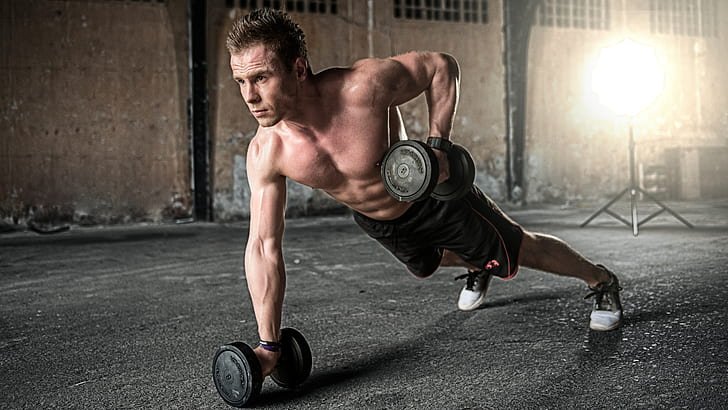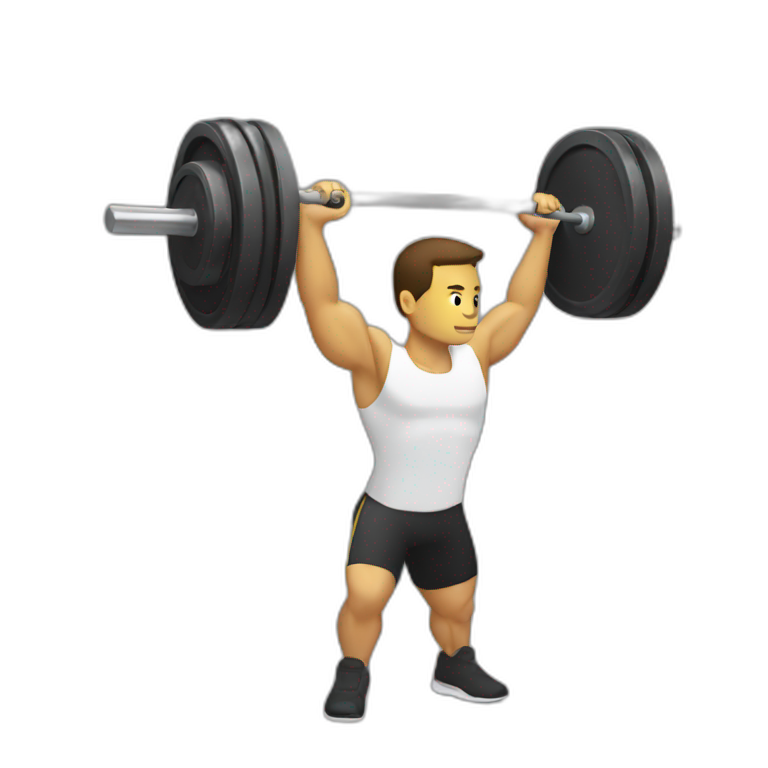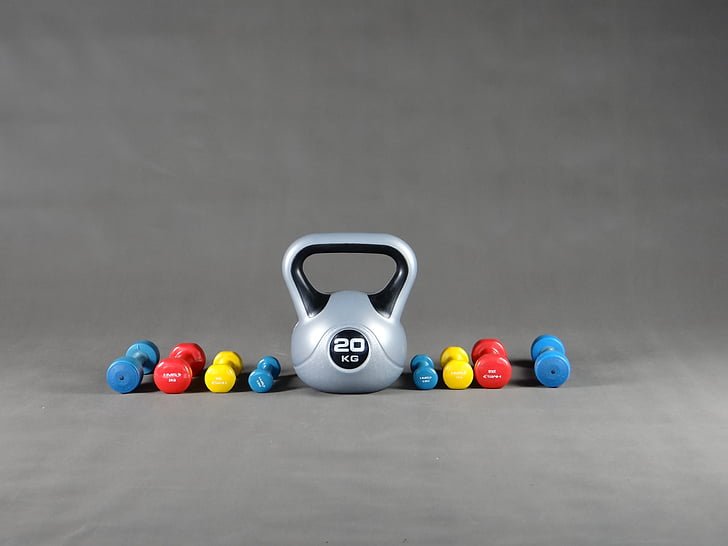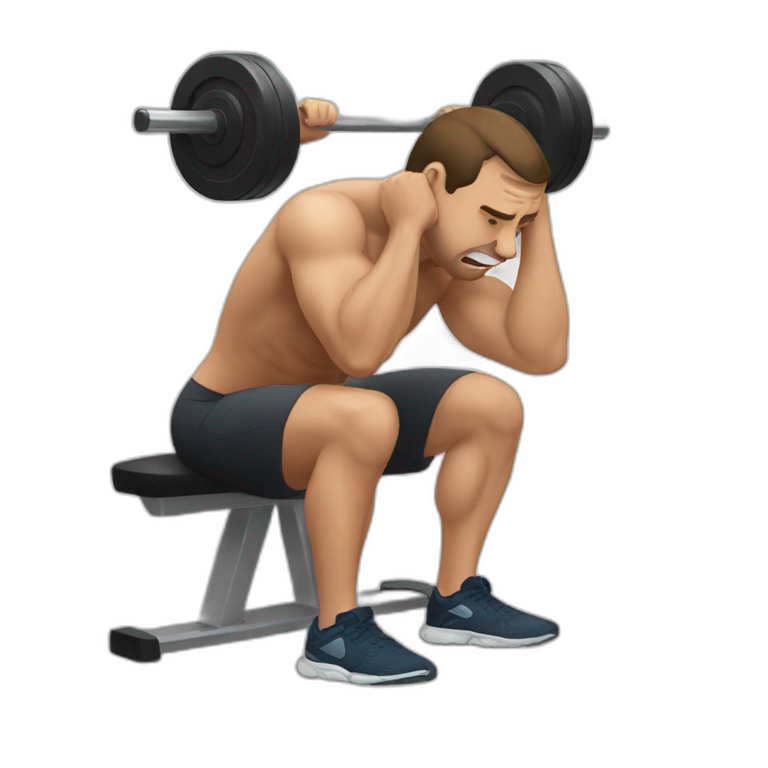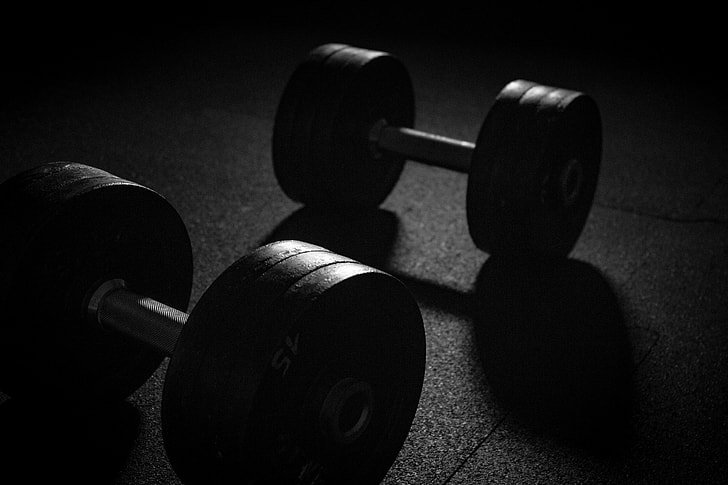Table of Contents
ToggleDumbbell Back Exercises Without Bench:
A bench or complicated machines are needed to obtain any benefits from your workout. However, this is not necessarily the case because you can do dumbbell back exercises without a bench and get excellent results.
Probably one of the most versatile pieces of equipment that you can use, dumbbells do not necessarily require a bench to build strength, improve posture, and increase muscle definition in the back. This guide shall take you through several dumbbell back exercises without a bench including tips for beginners, intermediates, and advanced users.
Why Do Dumbbell Back Exercises Without Bench?
First and foremost, there are so many reasons you might want to focus on the dumbbell back exercises without a bench. Convenient reason is the very first one. You won’t need that gym membership or expensive equipment for this workout. One pair of dumbbells will be all you need to work out anytime, anywhere.
Here are some reasons why you should choose dumbbell back exercises without a bench:
No bench is required. You can effectively train your back without a bench, which means you can do these exercises at home.
You will need just one piece of equipment: dumbbells. They are inexpensive, space-saving, and very easy to store.
Easy and effective. Dumbbell back workouts without a bench are easy to learn and best suited for working your back muscles.
Great for Overall Strength These workouts engage other muscles in your body other than your back, such as the core, arms, and shoulders.
Cost-Effective If you’re one of those who have a low budget, using dumbbells is very accessible compared to setting up a complete home gym with benches and such machines.
Benefits of Dumbbell Back Exercises Without Bench
Working the Back Several muscles make up the back, such as latissimus dorsi, trapezius, and rhomboids. Dumbbell back exercises on the floor engage all of your major back muscles to build strength and definition.
- Posture-Supporting Gains Working on dumbbell back exercises without a bench can help improve your posture. Most of the muscles holding you upright are strengthened, which may help avoid slouching and some types of back pain.
- Increased Flexibility Dumbbell back exercises enhance the pliability of your back muscles. Improving your flexibility can make certain functions easier and prevent you from sustaining an injury in the first place.
- Better Stability and Balance Many of these dumbbell back exercises, such as single-arm rows, challenge your sense of balance. Through these movements, you may improve your stability and coordination.
- Total Body Conditioning Many of these dumbbell back exercises without bench work your core and supporting muscles, therefore giving you complete exercise.
Dumbbell Back Exercises Without Bench for Beginners
If you are new to doing dumbbell back exercises without a bench, then it is very important to begin with simple, fundamental movements. This will give you a base, helping you practice proper form. Using lighter weights is essential in preventing strain and injury.
-
- Dumbbell Deadlift
Deadlift dumbbell is one of the great dumbbell back exercises without a bench. Perform the deadlift according to the following instructions.
- Dumbbell Deadlift
You have to stand on a shoulder-width distance between your feet and keep the dumbbells in both your hands.
- Keep your knees slightly bent and straighten your back.
- Allow the dumbbells to slowly reach towards the floor by bending at your hips.
- Keep the dumbbells closer to the legs while lowering them.
- Once your dumbbells pass over your knees, you will reverse the motion and stand upright.
This movement works the lower back, hamstrings, and glutes, and it is the perfect movement for those beginners out there.
-
- Dumbbell Bent-Over Row
The second must-do movement for your back is with dumbbells without a bench: it’s the dumbbell bent-over that targets the upper and middle part of your back.
- Dumbbell Bent-Over Row
Start by standing with your feet positioned shoulder-width.
Stand with your feet shoulder-width apart.
- Hold a dumbbell in each hand, and let it hang straight down to your front.
- Lower your torso forward, bending at the hips. Keep your back flat and your head up.
- Raise the dumbbells towards your chest by squeezing together your shoulder blades.
- Lower the dumbbells slowly and repeat.
This movement exercises the lats, rhomboids, and the traps. In this way, you will develop a stronger back.
Dumbbell Reverse Fly
In the dumbbell reverse fly, you work the upper back and shoulders using the rear deltoids and rhomboids to deliver the workout.
Starting position:
Stand with your feet hip-width apart, then grab a dumbbell in each hand. Slightly lean forward from the waist while keeping your back straight.
Make sure to have some curvature of the elbows as you lift the dumbbells out to your sides, squeezing your shoulder blades together. Move slowly back to the starting position and repeat.
This stretch can also improve your posture because it develops the muscles that line your upper back.
Advanced Dumbbell Back Exercises Without Bench
Once you master the basic moves, you can advance to more challenging exercises that further develop strength and muscle.
-
- Single-Arm Dumbbell Row
The single-arm dumbbell row is an advanced version of the bent-over row, training each side of your back individually.
- Single-Arm Dumbbell Row
- Position one knee and one hand on a bench or other fixed platform, with your back flat.
- Hold a dumbbell in the opposite hand, with your palm facing towards your body.
- Pull your elbow close to your body and row the dumbbell upward toward your waist.
- Let the dumbbell slowly fall then repeat.
- Alternate sides after completing your set
This exercise isolates the lats and mid-back, resolves muscular imbalances, and builds up strength.
-
- Dumbbell Pullover
Another dumbbell back without the bench exercise is the dumbbell pullover. This targets your upper back and chest.
- Dumbbell Pullover
- Lie flat on your back on the floor (or yoga mat) as well as you can.
- Grasp a dumbbell in both hands with an extended grip straight over your chest.
- Gradually pull the dumbbell backward over your head by keeping your arms slightly bent.
- Bring the dumbbell over your chest again and repeat.
This exercise also engages your chest, lats, and triceps, so it’s sort of a pretty efficient workout in general for the upper body.
-
- Stand with your feet shoulder-width apart, holding one dumbbell in each hand at your sides.
Dumbbell Shrug
- This exercise focuses on the trapezius muscles at the top of your back.
- Shrug your shoulders up towards your ears as far as you can.
- Hold for a second before lowering back down slowly.
- Do the movement for the desired number of repetitions.
- Shrugs are great exercises to build strength in the upper back and shoulders.
Advance Dumbbell Back Exercises without bench
Advanced Dumbbell Back Exercises, for experienced, will give a challenge to your muscles and help you grow. Try these below.
-
- Renegade Row
The renegade row is a full-body workout that engages the core, and it targets the back muscles.
- Renegade Row
Starting by getting into the push-up position. In this position, hold the dumbbells with your hands, one in each hand.
- Row one dumbbell to your waist, keeping your body as stable as possible.
- Lower the dumbbell down to the ground, and repeat on the opposite side.
- This exercise hits your back, shoulders, arms, and core muscles. It’s considered one of the best compound exercises.
-
- Dumbbell Split Squat Row
This combines the lower body with a row and is phenomenal for a full-body movement.
- Dumbbell Split Squat Row
- Stand up with a lunge position, one foot forward and the other at a distance.
- Hold one dumbbell in each hand at the sides.
- Now keeping your chest upright, bring your dumbbells close to your waist.
- Reverse to the starting position and repeat.
This exercise works well both for legs and back so you should not miss including this in your workout routine.
-
- Dumbbell Back Extension
This is a workout that involves the lower back, glutes, and hamstrings. It’s fantastic for posture and also strengthens the spine.
- Dumbbell Back Extension
- Lie face down on the ground with dumbbells in both hands and arms stretched out in front of you.
- Engage your back muscles to lift your chest and legs off the ground.
- Slowly lower back down to the start position and repeat.
- Tips for Doing Dumbbell Back Exercises Without Bench
Proper form also ensures you will not hurt yourself. The spine kept straight and controlled movement.
- Use a Mirror Where possible, make use of the mirror to check your form when performing dumbbell back exercises with no bench
- Keep Your Core Taut Always tighten your core during this set of exercises to avoid hurting the bottom part of your back.
- Gradually Add Weight As your body gets stronger, increase the weight of your dumbbells to continue challenging your muscles.
Have Time to Recover Your muscles must rest. Allow yourself 48 hours of rest between sessions targeting your back.
How Often Should You Do Dumbbell Back Exercises Without Bench?
Perform the exercises without the bench with dumbbells 2-3 times per week. That is too rarely to allow the muscles time to recover and grow. Instead, you will be able to steadily raise your strength and muscle mass.
Conclusion
While working out on dumbbells and back exercises without a bench, you might obtain a perfectly powerful back at home or anywhere with minimal equipment. For the starter or advanced lifter, there are exercises that you could work out that can challenge the back muscles and posture improvement. Dumbbells could be used to target areas of the back, from the upper traps down to the lower lats.
Start low, focus on the form, and progress from there at your own pace. With regular consistency and devoted practice, you will be able to feel some improvements in your back strength and posture.
What is a V-Taper Body?
A v-taper body refers to one that is wider at the shoulders and tapers down towards the waist. It is one of the most highly sought-after physiques since it defines a very fit and athletic look. Many of these models one may find in bodybuilding have this v-taper. What defines it is broad shoulders with a narrow waist, giving it the “V” shape from which it gets its name.
Why is the V-Taper Body Popular?
A v-taper body appears muscular. The shape creates a fusion of strength and fitness. It is said to add a drop-dead silhouette. The broad shoulders are prominent while the narrow waist makes a silhouette lean towards it. This shape is said to be attractive, and it forms a goal for many to achieve in fitness training.
How to Achieve a V-Taper Body
To have a v-taper body, you have to work on two major areas, especially the shoulders and the waist. So let us give a breakdown of what should be done.
Build Your Shoulders
To build a v-taper body, you must lean heavily on shoulder exercises. Strong shoulders widen the top portion of your body. Here are some of the great exercises for your shoulders:
- Overhead press
- Lateral raises
- Front raises
These exercises enhance the muscles of your shoulders-deltoids, and as your shoulders grow, so will your v-taper body.
Shrink Your Waist
The smaller your waist is, the more you have a v-taper body. You need to lose body fat in your midsection. Here’s how to do it:
Maintain a balanced diet of fewer calories.
- Do cardio exercises like running or cycling.
- Strength training to burn those excess fats.
A v-taper body will also be more pronouncedly showing the broad shoulders, as one’s waist will be smaller.
The Role of Genetics in a V-Taper Body
This isn’t for everyone, since some genetics come into play. A wide shoulder frame or a naturally occurring waistline that is smaller, are just some of the traits most folks are born with. But if you do not have this kind of trait then you can work on building the v-taper body. Train harder and even find the right exercises that can give you that shape.
Best Exercises for a V-Taper Body
Let’s look through some of the best exercises that can help you achieve a v-taper body.
- Pull-Ups
A pull-up is a great exercise to build your upper back and shoulders. These muscles are imperative for creating a v-taper body. It also helps in strengthening your arms and core.
- Lateral Raises
Lateral raises target the shoulders. This is the ultimate exercise to make your top more bodied. Strong shoulders set the basis for that nice v-taper body.
- Deadlifts
Deadlifts target the back and legs. A tight back gives you the shape you need. Your back is very necessary, as deadlifts take up the muscles in your back and help carve out that “V” shape.
Squats:
- This exercise is a good method to build your lower body strength. Although squats don’t directly affect the shoulders or waist, they contribute to the overall muscle buildup.
- The stronger your legs are, the more you are improving your body form and making it look even better at having a v-taper body.
Chin-Ups
- Chin-ups are like pull-ups, but they concentrate more on the biceps. They help to work on a strong upper body, which is needed for the v-taper body.
Nutrition for a V-Taper Body
Nutrition has to do a lot with the v-taper physique. For you to be lean, the right nutrition is needed. The following should be consumed in abundance:
- Lean proteins; chicken or fish would be examples.
- Oils and nuts; avocados are healthy fats
- Fruits and vegetables for vitamins and minerals
Avoid processed foods and juices. They tend to add unwanted fats to your body thereby ruining your intention to achieve a v-taper physique.
Cardiovascular Activity and Fat Loss
Cardio is also another thing that is extremely necessary in getting a v-taper body. They burn fats primarily in the waist area. Do cardio 3-4 times a week. Some of them are:
- Running
- Swimming
- Cycling
Cardio will smoothen your waistline, giving you an effect like you are holding a v-taper body.
Rest and Recovery
Rest is the secret for a v-taper body as well as muscle building. Muscles grow while you rest, not when at work. Sleep and wait for your muscles to recover.
Developing a v-taper body may take some months for some people while for others it may take more months. The body would, however, change given that consistency is observed in working out and nutrition.
Body V-Taper for Women
Many women want their body to be a v-taper body. It is a fantastic look for those who desire that their body figure be beautiful. Women can have well-shaped shoulders through lateral raises and overhead presses. Women also concentrate on cardio and diet to reduce their waist size.
V-Taper Body for Men
A V-taper body for men is typically a generic ambition in bodybuilding. Men tend to train for massive shoulders and low body fat content for the ideal V-shape. The most commonly featured exercises in their routines are deadlifts, pull-ups, and lateral raises.
V-Taper Body and Posture
Good posture can also create your v-taper body. Standing erect with your chest out and shoulders back causes your body to look wider at the top. Good posture enhances your v-taper body.
Common Mistakes to Watch Out
During training for your v-taper body, here are several common mistakes that you ought to be aware of:
- Don’t have enough back work.
- You are overtraining your shoulders without rest.
- You are not taking in enough protein.
- Doing too much cardio leads to losing body muscle mass.
- Avoid all these and keep on the road towards your best v-taper body.
Conclusion
A v-taper body is what most people look for as a physiognomy image, with broad shoulders and a narrow waist. Such a look cannot be achieved without the right amount of strength training, some cardio, and perhaps some changes to one’s diet. Hard work is what usually works with someone’s commitment toward a v-taper body. Whoever it may be, a v-taper body is probably a great fitness aim.
V-Taper Workout: A Secret to a Wider Upper Body
A v-taper workout is a bodybuilding exercise plan that gives you a strong, lean, and defined upper body. It aims at engaging the main muscle groups that make the shoulders wider but the waist narrower. Here’s a guide that will walk you through everything you need to know about the v-taper workout.
What is a V-Taper?
A v-taper refers to a shape as seen in the letter “V.” It is characterized by wide shoulders and a narrow waist. A v-taper workout can also be achieved by focusing on certain muscle groups to get this kind of shape.
Benefits of the V-Taper Workout
There are various benefits to a v-taper workout. First, it is an extremely defined physique, which makes one look incredibly strong. Its main characteristics include improving posture and enhancing confidence. More importantly, being in a v-taper shape usually symbolizes strength and fitness.
Muscle Groups Utilized in the V-Taper Exercise
The v-taper exercise primarily works on the following muscle groups:
- Shoulders
- Back
- Core
These muscles make you look the way you do after a v-taper workout by working them in the most efficient manner possible.
Shoulders
Your shoulders play a great role in achieving the v-taper look. Strong deltoids will make your upper body appear bigger and more defined.
Back
A wide back is very essential for the v-taper look. Some of the exercises you can train on include doing pull-ups or rows as they help expand your back by working your lat.
Core
A slim waist is also quite essential for a v-taper. Some of the core exercises that will help trim the waist and work on posture are as follows:
V-Taper Workout: Exercises to Try
Here are some of the easy exercises to add to your v-taper workout.
Shoulder Press
The shoulder press works your deltoid muscles, which gives you shoulder width.
- Sit tall with your back.
- Push the weights overhead.
- Lower down and do it again.
- Lateral Raises
Lateral raises work your side delts, hence developing your broader shoulders.
Hold the weights by the side.
- Lift the weights away to the sides when your arms are parallel to the floor.
- Lower slowly.
Pull-Ups
Pull-ups can enable a very wide back.
- Grip the pull-up bar with your hands facing away from you.
- Pull up to where your chin is above the bar.
- Slowly lower yourself back down and repeat.
Lat Pulldowns
- Lat pulldowns work your lats and will come in handy when building that V-shaped back.
- Sit at the lat pulldown machine.
- Grip the bar and bring it down to your chest.
- Slowly release the bar and repeat.
Rows
- Rows hit the upper back and shoulders, so they’re included in getting that v-taper as well.
- Use a cable machine or dumbbells.
- Pull in toward you, squeezing your back muscles.
- Slowly return to the start.
Planks
- Planks are great if you are targeting the core.
- Position: hold a push-up position with your arms straight.
- Make sure your body is aligned.
- Keep this for as long as you can.
Russian Twists
- Russian twists work your obliques, making your waistline thinner.
- Sit on the floor. Tilt yourself backward.
- Twist your torso from side to side.
- You may use a weight to make it harder for you.
How Frequently Should I Do My V-Taper Workout?
You should do your v-taper workout 3 to 4 times a week. This will allow proper recovery while keeping your muscles stimulated often enough.
Example V-Taper Workout Routine
Here’s a simple v-taper workout you can try:
- Warm-Up: 5-10 minutes of light cardio.
- Shoulder Press: 3 sets of 10-12 reps.
- Lateral Raises: 3 sets of 12-15 reps.
- Pull-Ups: 3 sets of 5-10 reps.
- Lat Pulldowns: 3 x 10-12 repetitions
- Rows: 3 x 10-12 repetitions
- Planks: 3 x 30-60 seconds
- Russian Twists: 3 x 15-20 repetitions on each side.
Ending with some stretching to work out your muscles.
V-Taper Nutrition
The right food would be of great importance toward achieving the v-taper body. To achieve effective results for your v-taper exercise, make sure you’re eating the appropriate foods. Focus on;
- Protein: Builds more muscles.
- Healthy fats: General body health.
- Carbs: Feed your workouts.
Don’t forget to drink water to stay hydrated.
Rest and Recovery
It’s not only the exercise alone that will help muscle growth but also Rest and Recovery. Take some time after the v-taper and let your body recover from your workout. Your muscles get that chance to get repaired and build themselves, and you will get that desired V-shape sooner.
Common Mistakes to Avoid
While training in v-taper avoid:
- Overtraining: Do not train the same muscle for two consecutive days. Give them some rest time to reactivate themselves.
- Using more weights than required: It is advised to start with lighter weights and gradually increase the intensity.
- Lack of core exercises: The V-taper involves more than just your shoulders and back. Therefore, you need to train core muscles too.
How Many Weeks Do the Effects Last?
The time taken to achieve noticeable effects depends upon your current fitness levels and how regularly you follow the v-taper workout routine. You might see noticeable effects as early as 4 to 6 weeks.
Conclusion
A V-taper workout might be beneficial in building a more well-drawn and more massive body, particularly on top. You could work your shoulders, your back, and your core, as the primary target in this kind of workout would be trying to get the classic V-shape. To do this, do not forget to persevere, eat, and rest. It’s then that you would know how to get a wider upper body and a narrower waist fast.
The V-Taper Workout at Home: Get a Sculpted Body
Want that V-taper body? Then you need the right kind of workout. This means wide shoulders and narrow waistlines. It simply looks great, not to say a sign of strength and fitness. This does not have to be done at the gym; with a proper V-taper workout at home, you will just be amazing.
What is the V-Taper?
The V-taper is a physique where your upper body is wide while your waist is slim. It makes you look so strong. To obtain a V-taper, you have to build your shoulders and back while trimming down your waist. That’s where the V-taper workout at home comes in.
Why Do You Need a V-Taper?
A V-taper body increases your confidence. It makes you taller and more muscle-built. Having a defined V-taper means that you have both power and discipline. Not to mention, this is a good way to enhance your posture and health condition. A V-taper workout at home will get you that in simple steps.
The Best Exercises for the V-Taper Workout at Home
In building the perfect V-taper, concentrate on exercise activities targeting the shoulders, back, and waist. Some of the exercises you should focus on in your home V-taper workout are as follows.
-
- Shoulder Press
The shoulder press is great for building your deltoids. Deltoids aid in widening your shoulders. For the shoulder press, you will need dumbbells or a resistance band. Stand upright, raise the weights overhead, and bring them back down. It works out your shoulders and arms.
- Shoulder Press
-
- Push-Ups
Push-ups are one of the fantastic bodyweight exercises for your shoulders, chest, and arms. It’s simple, yet it will help you build a strong upper body. To achieve the V-taper effect, push-ups with hands placed a little wider apart than shoulder-width.
- Push-Ups
-
- Rows
Rows knock on your upper back. The way you do a row: Take two dumbbells Tip backward, go forward Pull the weights into your chest Lower them back down Rows give you a wider, broader back. There’s that V-taper, and you’ll need to have one of these if you want your shoulders wider than your hips.
- Rows
-
- Lateral Raises
It is a great exercise for the widening of the shoulders. Take two dumbbells. Raise your arms out to the sides as far as you can lift them till they reach about shoulder level. Then, return them down very slowly. This is the simplest exercise you can use to make a V-shape.
- Lateral Raises
Planks
One of the best exercises when looking to trim your waist is to do a plank. Set up in a push-up position, but let your forearms touch the ground. Hold your position for 30 seconds up to one minute. A plank works your core and burns fat around the waist.
-
- Mountain Climbers
Mountain climbers are another great exercise for trimming down your waist. Enter into a push-up position and shift your knees alternately toward your chest. This workout will pump your heart and burn all the excess fat that hangs around there.
- Mountain Climbers
-
- Deadlifts
Deadlifts hit your lower back, hamstrings, and glutes. Deadlifts can help you build muscle in your back, which will give you that V-taper if done properly. Stand with feet shoulder-width apart. Keep a weight in front of you and bend at hips and knees. Lower the weight; stand up.
- Deadlifts
-
- Bicycle Crunches
Bicycle crunches- to tone down your waistline and engage your core. Lie on your back, hands behind the head. Bring one knee towards the chest and twist the torso to bring the opposite elbow toward it. Alternate sides to work the core and burn fat.
- Bicycle Crunches
-
- Superman
- Superman exercises work your lower back. Lie on the floor, face down. Take your arms and legs up off the floor as high as you can. Sustain for a few seconds, and then release. It improves posture and keeps the back strengthened.
-
- Side Planks
- Side planks will work your obliques, slenderizing your waist. You lie on your side, resting on one forearm. Angle your hips off of the ground to form a straight line from your head to your heels, then switch.
- To get results, plan to do your V-taper workout at home three to four times a week. Rest between workouts allows your muscles to recover as well. This way you will build muscle and lose fat efficiently. Always follow your body to avoid overtraining.
Success Tips
- Consistency is the key: To get the V-taper, stick to it. Do your workout at home regularly.
- Eat well. Your body will burn extra pounds of fat with good, wholesome food. Take plenty of protein and veggies. You should cut on more processed foods.
- Sleep. In most ways, muscles get stronger during sleep. Rest and enjoy 7-9 hours of sleep.
- Drink a lot of water. Enough hydration helps in maintaining good performance in workouts and faster muscle recovery.
Change your workout every three weeks or so to prevent your muscles from getting too comfortable.
Proper Form
You have proper form when doing a V-taper workout at home. Proper form saves you from getting injured and you get a lot more out of a V-taper workout than you would many other exercise types. If you’re not sure how to do something, look up videos online or ask someone professional for guidance.
How to Track Your Progress
Take pictures, take measurements; and monitor your waist and shoulders once a week. Then you will easily see how your V-taper is coming along. You can also track your strength by writing down what weight you raise or how many repetitions you perform.
Conclusion
A V-taper body is powerful and athletic. You can get a V-taper at home by performing the right exercises with dedication. The V-taper workout at home is straightforward but effective. You build broad shoulders, a strong back, and a slim waist. Be constant, eat well, and challenge yourself. You would be surprised at how quickly you can develop visible results. Keep pushing, and you will soon get that V-taper you’ve always wanted.
Remember: a great V-taper starts with a good V-taper workout at home.
V-Shape Back Workout with Dumbbells: Simple Guide
A V-shaped back is the dream of every fitness enthusiast. It is all about building a wide shoulder and narrow waist. This shape requires perfect tools like dumbbells. Let’s see a simple V-shape back workout with dumbbells.
What Is the V-Shaped Back?
The wide lats and sharp shoulders really characterize a V-shape back. The result is a broad upper body narrowing down towards the waist. Dumbbells may help to target these muscles in the right way.
Why Use Dumbbells for a V-Shape Back?
Dumbbells are extremely flexible. It allows a complete range of motion. This is perfect for developing the muscles you need to have that kind of V-shape back. You can hit your lats, traps, and shoulders with dumbbells.
Muscles You Need to Have for a V-Shape Back
To achieve the much-needed V-shape back, pay attention to these muscles:
- Lats: These give width to your back.
- Traps: These muscles help give you shoulder definition.
- Shoulders: The deltoids must be strong and broad.
V-Shape Back Workout with Dumbbells: Warm-Up
Before beginning your workout, prepare your muscles and joints. Now, dynamic stretches are particularly beneficial for 5-10 minutes for injury avoidance.
-
- Dumbbell Rows for Lats
Begin with dumbbell rows. This exercise works the lats, thus giving you width. Stand with feet shoulder-width apart. Use one or more dumbbells. Bend at the waist. Pull the dumbbells to your sides. Squeeze your shoulder blades together. Inhale slowly and lower the dumbbells.
- Dumbbell Rows for Lats
Tips:
The back should be straight.
Avoid using momentum to lift the weight.
- Dumbbell Pullover
Next is the dumbbell pullover. This exercise is a stretch for lats. The thing about it is also engaging some chest and shoulder exercises. Lie on a bench. Hold a dumbbell with two hands. Lower the dumbbell behind your head. Bring it back over your chest.
Tips:
Pay attention to the stretch in lats.
Use lightweight if you’re new at this movement.3. Dumbbell Lateral Raises for Shoulders.
Dumbbell Lateral Raise
Target Area: Shoulders - Muscle Activation: Opens up the upper body
Side Standing tall with a dumbbell in each hand, lift the dumbbells out to the sides Stop when your arms are parallel to the ground and slowly lower the dumbbells.
Tip:
Keep a slight bend in your elbows.
Don’t lift too heavy at first.
-
- Dumbbell Reverse Flyes for Rear Delts
Reverse Flyes Engage the posterior deltoids and upper back. Lean forward slightly. Take one dumbbell in each hand. Raise the dumbbells out to your sides. Squeeze in on your shoulder blades. Lower the dumbbells slowly.
- Dumbbell Reverse Flyes for Rear Delts
Tips:
Do slow, controlled movements.
Ensure your back does not arch.
-
- Dumbbell Shrugs for Traps
Dumbbell shrugs work great for building traps. Standing upright with dumbbells by your sides, bring your shoulders up as far as you can. Hold that for a second. Then lower your shoulders back down to your sides.
- Dumbbell Shrugs for Traps
Tips:
Keep your arms straight.
Focus more on pinching your traps.
-
- Dumbbell Deadlifts for Overall Back
Dumbbell deadlifts work all of the back. Stand with feet shoulder-width apart. Hold a dumbbell in each hand. Bend at the waist, keeping your back straight. Lower the dumbbells toward the ground. Stand back up.
- Dumbbell Deadlifts for Overall Back
Tips:
Keep the dumbbells close to your body.
Do not round your back.
-
- Dumbbell Arnold Press for Shoulders
Arnold press shoulder exercise: This is a three-headed deltoid developer. Dumbbells begin and remain in front of your shoulders. Rotate the dumbbells while lifting them overhead, and then lower them back to the beginning position.
- Dumbbell Arnold Press for Shoulders
Tips:
-
- Use light to moderate weight.
-
- Emphasize smooth, controlled movements.
-
- Cool Down After Your Workout
Cool down after your exercise. Stretch the muscles you exercised. Hold each stretch for 15-30 seconds. This will help prevent soreness and increase flexibility.
- Cool Down After Your Workout
How Often to Do V-Shape Back Workouts with Dumbbells
If you want to get results, you need to work this out 2-3 times a week. Your muscles need time to recover between workouts.
How to Succeed
- Maintain proper form: This means that you avoid injuries.
- Use progressive overload: Gradually increase the dumbbells as you gain strength.
- Eat for Muscle Growth: Sufficient protein to gain muscles.
- Rest and Recover: Adequate sleep to let muscles repair and grow.
- Final Thoughts on Achieving a V-Shaped Back with Dumbbells
A V-shaped back will not be achieved overnight. Dumbbells are fantastic if you want to attain that shape. Keep at the workout routine, eat enough, and rest in between. With commitment, you will achieve it.
Workout Summary:
- Dumbbell Rows: Great exercise for lats.
- Dumbbell Pullovers: A great lat stretch and strengthener.
- Dumbbell Lateral Raises Trget shoulders.
- Dumbbell Reverse Flyes: Strengthens rear delts.
- Dumbbell Shrugs: Build traps.
- Dumbbell Deadlifts: It can be quite effective in working the entire back as well.
- Dumbbell Arnold Press: It directly focuses on shoulder development.

